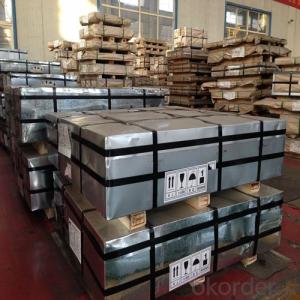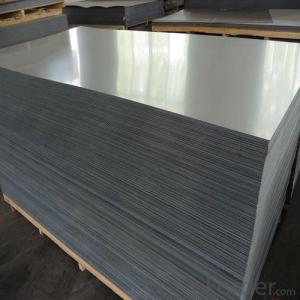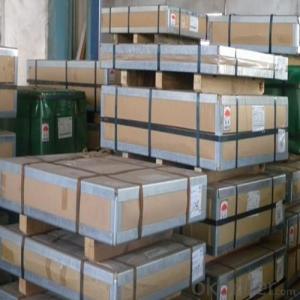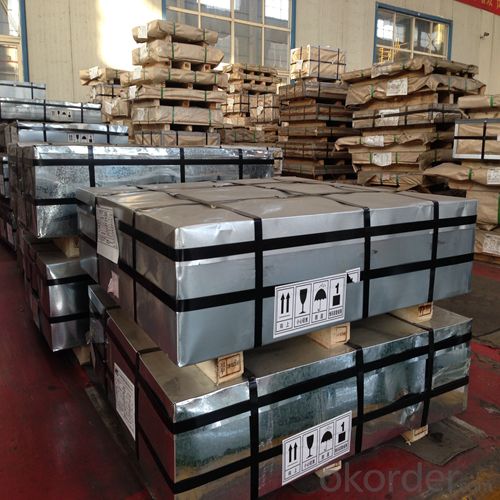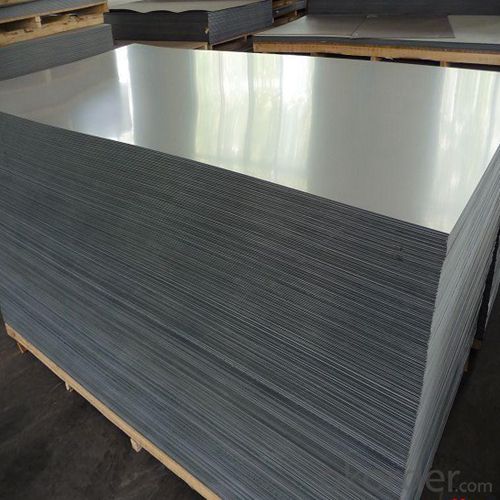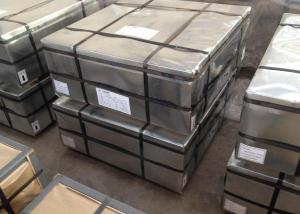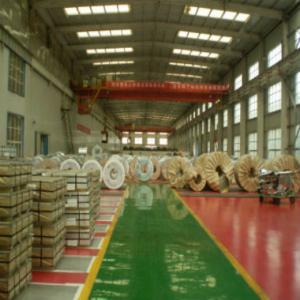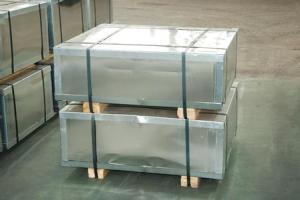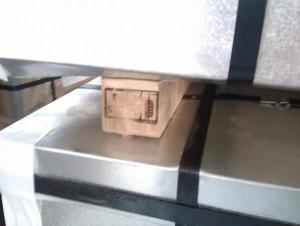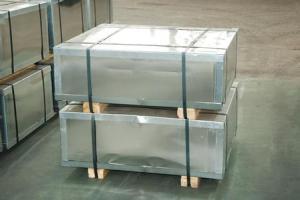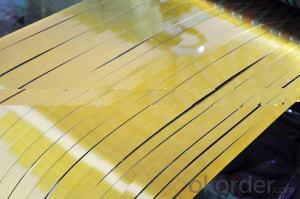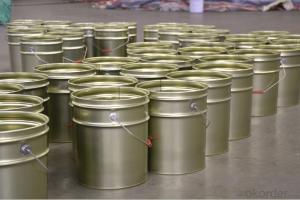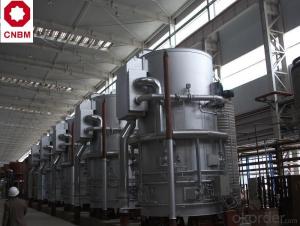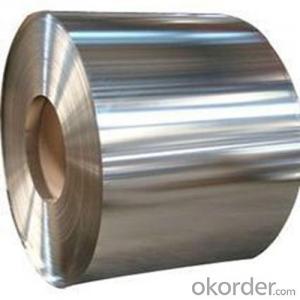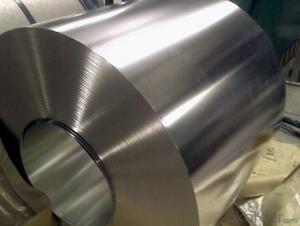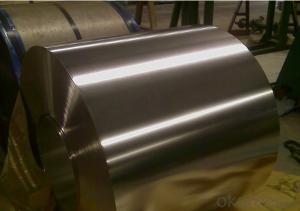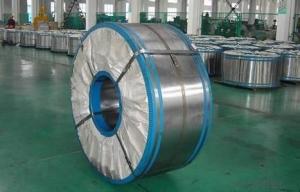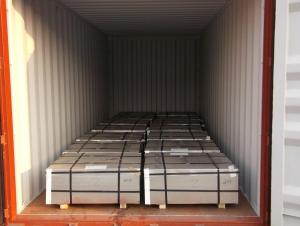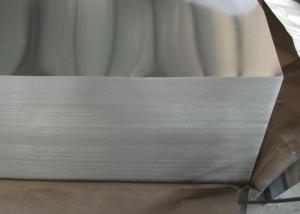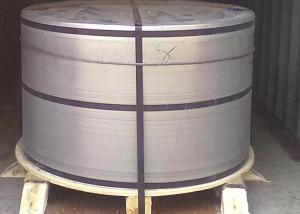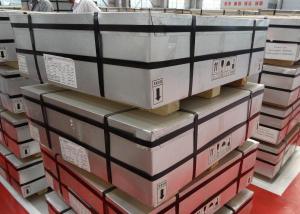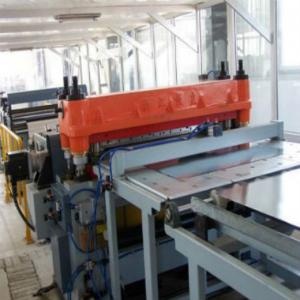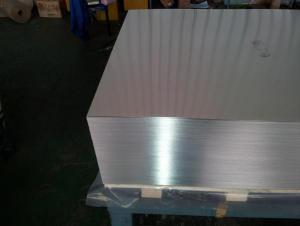Prime Electrolytic Prime ETP Tinplate for Metal Packaging
- Loading Port:
- Tianjin
- Payment Terms:
- TT OR LC
- Min Order Qty:
- 25 m.t
- Supply Capability:
- 30000 m.t/month
OKorder Service Pledge
OKorder Financial Service
You Might Also Like
1.Structure of Prime Electrical Prime ETP Tinplate for Metal Packaging Description
Electrolytic Tin Plate Coils and Sheets for Foods Metal Packaging, is one thin steel sheet with a coating of tin applied by electrolytic deposition. Tinplate made by this process is essentially a sandwich in which the central core is strip steel. This core is cleaned in a pickling solution and then fed through tanks containing electrolyte, where tin is deposited on both sides. As the strip passes between high-frequency electric induction coils, it is heated so that the tin coating melts and flows to form a lustrous coat.
2.Main Features of the Prime Electrical Prime ETP Tinplate for Metal Packaging
Appearance – Electrolytic Tin Plate is characterized by its beautiful metallic luster. Products with various kinds of surface roughness are produced by selecting the surface finish of the substrate steel sheet.
Paintability and printability – Electrolytic Tin Plates have excellent paintability and printability. Printing is beautifully finished using various lacquers and inks.
Formability and strength – Electrolytic Tin Plates have got very good formability and strength. By selecting a proper temper grade, appropriate formability is obtained for different applications as well as the required strength after forming.
Corrosion resistance – Tinplate has got good corrosion resistance. By selecting a proper coating weight, appropriate corrosion resistance is obtained against container contents. Coated items should meet 24 hour 5 % salt spray requirement.
Solderability and weldability – Electrolytic Tin Plates can be joined both by soldering or welding. These properties of tinplate are used for making various types of cans.
Hygienic – Tin coating provides good and non toxic barrier properties to protect food products from impurities, bacteria, moisture, light and odours.
Safe – Tinplate being low weight and high strength makes food cans easy to ship and transport.
Eco friendly – Tinplate offers 100 % recyclability.
Tin is not good for low temperature applications since it changes structure and loses adhesion when exposed to temperatures below – 40 deg C.
3.Prime Electrical Prime ETP Tinplate for Metal Packaging Images
4.Prime Electrical Prime ETP Tinplate for Metal Packaging Specification
Standard | ISO 11949 -1995, GB/T2520-2000,JIS G3303,ASTM A623, BS EN 10202
|
Material | MR,SPCC |
Thickness | 0.15mm - 0.50mm |
Width | 600mm -1150mm |
Temper | T1-T5 |
Annealing | BA & CA |
Coil Inner Diameter | 508mm |
Weight | 6-10 tons/coil 1~1.7 tons/sheets bundle |
Passivation | 311 |
Oil | DOS |
Surface | Finish,bright,stone,matte,silver |
5.FAQ of Electrolytic Tin Plate Coils and Sheets for Foods Metal Packaging
-What your tinplate material is used for ?
Tinplate is widely used for the packaging of products. Such as food cans,
beverage cans, pet cans, closures, general line cans and so on.
Printed Tinplate is offered!!
-How to place .an order or contact you ?
Please send us Email. we will give you a quick response in seconds .
- How is your quality ?
All our quality is prime even the secondary quality . We have many years experience
In this field with serious quality control standard . Advanced equipment, We welcome your visit to our factory .
- Q: How does tinplate contribute to the overall sustainability of packaging?
- Tinplate contributes to the overall sustainability of packaging in several ways. Firstly, tinplate is a highly durable and long-lasting material, which means that packaging made from tinplate can be reused and recycled multiple times without losing its quality. This helps reduce the need for producing new packaging materials, conserving resources and minimizing waste. Additionally, tinplate is 100% recyclable, meaning that it can be easily recovered and turned into new products, reducing the environmental impact associated with its disposal. Moreover, tinplate offers excellent protection and preservation properties, ensuring the longevity and safety of packaged goods, thus reducing food waste and promoting sustainable consumption. Overall, tinplate packaging plays a significant role in achieving a circular economy by minimizing waste generation, conserving resources, and promoting sustainable practices.
- Q: How is tinplate affected by different types of dairy products?
- Tinplate, which is a thin steel sheet coated with a layer of tin, can be affected by different types of dairy products due to their varying acidity levels and chemical composition. Dairy products such as milk, cream, and butter, which have a neutral pH, generally do not cause significant reactions with tinplate. However, highly acidic dairy products like yogurt or buttermilk can corrode the tin coating, leading to discoloration or off-flavors in the food. It is important to use proper packaging materials, such as food-grade plastic or glass, for storing and transporting highly acidic dairy products to prevent any unwanted reactions with tinplate.
- Q: Can tinplate be used for medical packaging?
- Yes, tinplate can be used for medical packaging. Tinplate is a durable and corrosion-resistant material, making it suitable for protecting and preserving medical products. It meets the necessary hygiene and safety standards required for medical packaging and can provide an effective barrier against moisture, light, and oxygen. Additionally, tinplate is recyclable, making it an environmentally friendly choice for medical packaging.
- Q: Can tinplate be used for packaging non-food items?
- Yes, tinplate can be used for packaging non-food items. Tinplate is a versatile and durable material that is commonly used for packaging various products, including cosmetics, pharmaceuticals, and household items. Its protective properties and ability to resist corrosion make it suitable for preserving the quality and integrity of non-food items.
- Q: Can tinplate be used for promotional items?
- Yes, tinplate can be used for promotional items. Its versatility, durability, and ability to be customized make it a suitable material for creating various promotional products such as tin cans, tin boxes, tin signs, and tin trays. Tinplate can be printed, embossed, or lithographed with logos, graphics, or promotional messages, making it an attractive choice for promotional merchandise.
- Q: What are the advantages of using tinplate for automotive components?
- One advantage of using tinplate for automotive components is its high corrosion resistance. Tinplate is coated with a thin layer of tin, which acts as a protective barrier against moisture and oxidation, ensuring the longevity of the components. Additionally, tinplate offers excellent formability, allowing for complex shapes and designs, which is crucial in the automotive industry. Lastly, tinplate is lightweight yet strong, contributing to improved fuel efficiency and overall vehicle performance.
- Q: What are the key factors to consider when choosing tinplate for packaging?
- When choosing tinplate for packaging, there are several key factors to consider. These include the quality and durability of the tinplate, its corrosion resistance properties, its compatibility with the packaged product, the desired aesthetic appeal, the cost-effectiveness, and the environmental sustainability of the material. Additionally, factors like the ease of printing, forming, and sealing should also be taken into account to ensure the tinplate meets the specific packaging requirements.
- Q: What are the advantages of using tinplate for furniture?
- One of the advantages of using tinplate for furniture is its durability. Tinplate is known for its strength and resistance to corrosion, making it a long-lasting material that can withstand everyday wear and tear. Additionally, tinplate is also lightweight, making it easier to move and rearrange furniture pieces. Its versatility allows for various design possibilities, as it can be easily shaped and molded into different forms. Furthermore, tinplate is an environmentally friendly option as it can be recycled, reducing waste and promoting sustainability.
- Q: What are the main applications of tinplate in the pet food industry?
- Tinplate is commonly used in the pet food industry for packaging purposes. It offers excellent protection against oxygen, light, and moisture, which helps to maintain the freshness and quality of pet food. Additionally, tinplate cans are easy to open and reseal, making them convenient for pet owners. The material is also recyclable, making it an environmentally friendly choice for packaging.
- Q: What are the typical tooling costs for tinplate production?
- The typical tooling costs for tinplate production vary depending on factors such as the complexity of the design, size of the production run, and specific requirements. However, tooling costs for tinplate production can range from a few thousand dollars to tens of thousands of dollars.
Send your message to us
Prime Electrolytic Prime ETP Tinplate for Metal Packaging
- Loading Port:
- Tianjin
- Payment Terms:
- TT OR LC
- Min Order Qty:
- 25 m.t
- Supply Capability:
- 30000 m.t/month
OKorder Service Pledge
OKorder Financial Service
Similar products
Hot products
Hot Searches
Related keywords
